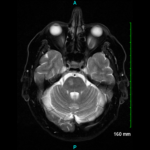Thus, attention has turned to the potential of rituximab as a maintenance agent. The Maintenance of Remission Using Rituximab in Systemic ANCA-Associated Vasculitis (MAINRITSAN) trial included 155 patients with newly diagnosed or relapsing GPA, microscopic polyangiitis or renal-limited ANCA-associated vasculitis in complete remission after a cyclophosphamide-glucocorticoid regimen. These patients were randomly assigned to receive 500 mg of rituximab on Days 0 and 14 and at Months 6, 12 and 18 after study entry or daily azathioprine until Month 22. After 28 months of follow-up, 29% of patients in the azathioprine group experienced relapse; only 5% in the rituximab group experienced relapse.6 Prof. Guillevin further noted that after five years of follow-up, relapse-free survival was 72% in rituximab-treated patients and 49% in azathioprine-treated patients.
These findings led to the MAINRITSAN 2 trial, which sought to compare individually tailored (based on trimestrial biological parameter monitoring) with fixed-schedule rituximab reinfusion for remission maintenance of ANCA-associated vasculitis. In this study, patients in the tailored arm received an infusion of 500 mg of rituximab at randomization and then received reinfusion only when CD19+B lymphocytes or ANCA reappeared or the ANCA titer rose markedly. Meanwhile, control patients received a fixed 500 mg infusion of rituximab on Days 0 and 14 post-randomization and then again at six, 12 and 18 months. This study demonstrated that relapse rates did not differ significantly between individually tailored and fixed-schedule rituximab regimens, but individually tailored-arm patients received fewer rituximab infusions.7 Based on these results, Prof. Guillevin concluded that rituximab appears to be safe and effective and that ANCA titer and/or CD19+B lymphocyte count have no clear predictive value.
GCA Remission
Lisa Christ, MD, of the University of Bern, Switzerland, ended the session, discussing the maintenance of remission in patients with GCA. Tocilizumab is a potential new therapy for GCA treatment. This monoclonal antibody binding the alpha chain of the human interleukin (IL) 6 receptor has been licensed as a therapeutic agent to induce and maintain remission in GCA. Two randomized clinical trials—one trial using 8 mg/kg body weight of intravenous tocilizumab every four weeks and the other trial using 162 mg of subcutaneous tocilizumab given weekly or every two weeks—showed the glucocorticoid dose could be reduced by at least 50%.8,9
Subsequent questions have arisen: What happens to patients after one year of follow-up with regard to relapse? Are there factors that may predict relapse after tocilizumab treatment discontinuation?
To answer these questions, researchers in Switzerland and Germany evaluated the patients in the 52-week tocilizumab treatment arm of a clinical trial from 2016 for signs of disease relapse, including with magnetic resonance angiography (MRA).8 At a mean follow-up time of 28 months, it was shown that half of the GCA patients remained in lasting remission after stopping tocilizumab treatment. No clinical, laboratory or imaging findings predicted relapse or lasting remission in GCA patients. Of interest, however, researchers noted that although a trend to a reduction of enhancing areas of the wall of the descending aorta existed, all patients in lasting remission showed MRA enhancement at follow-up, which indicates the potential of ongoing subclinical disease activity.10

